I’m on the road 11 out of 12 weeks and during that time I’m flying American, Delta, United, Alaska, Southwest, Qantas, British Airways and Volotea.
I don’t fly United a ton. Their route network and frequencies don’t help me a whole lot out of Austin, where they’re the fourth largest airline. I long avoided them because they had the worst wifi in the industry and I try to be productive inflight. Their inflight internet has gotten better, even before bringing on StarLink which is the best wifi in the skies (I’ve used it on JSX and on Hawaiian).
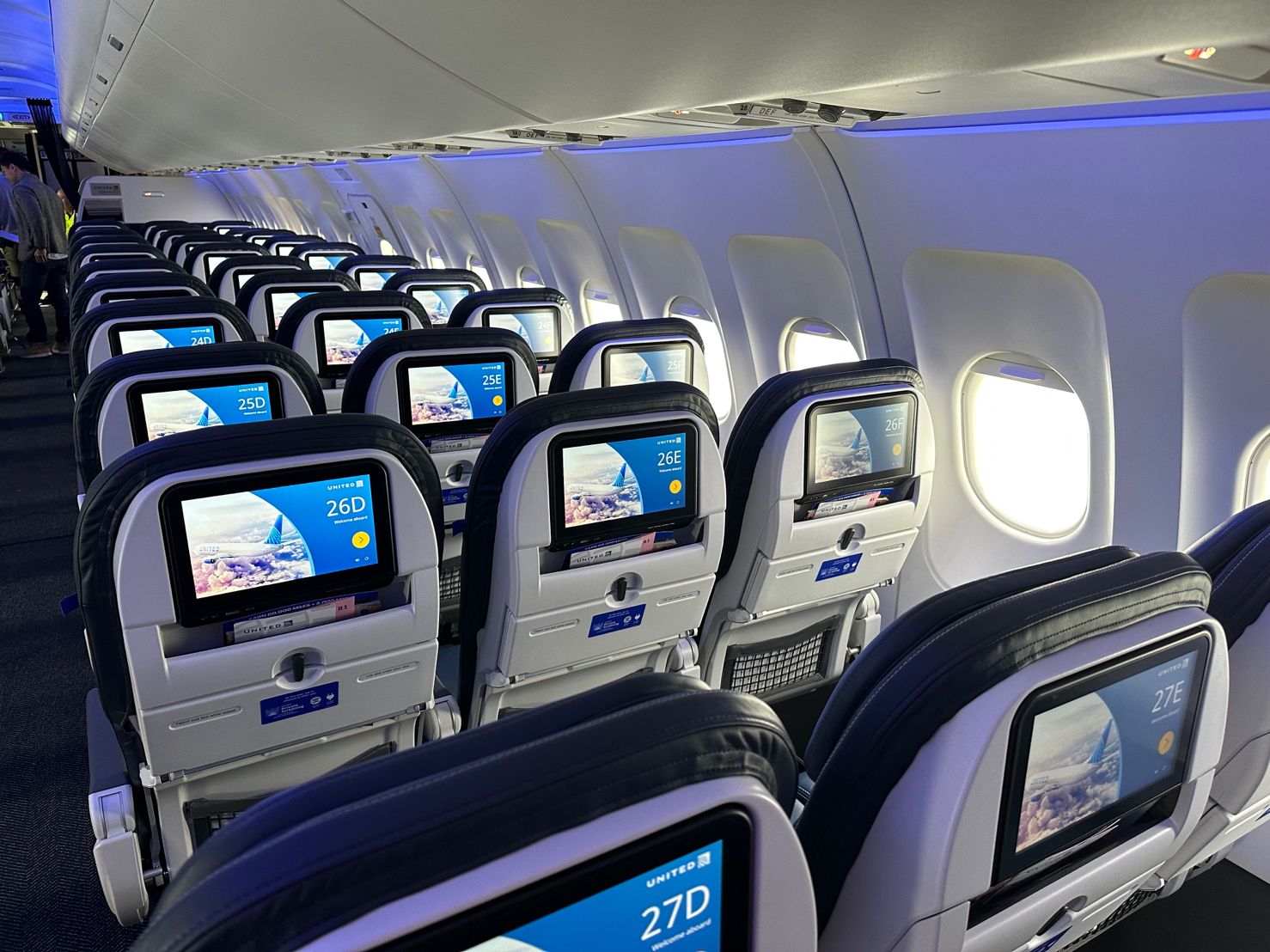
I hadn’t experienced this on my most recent United flights, but this past week flight attendants locked the lavatories for descent. That’s not something I’ve ever seen on another U.S. airline. It’s something that United does increasingly often, it seems – especially when there’s turbulence expected.
- Every transport‑category lav has an external latch hidden behind the “LAVATORY” or “NO SMOKING” placard. Sliding it lets crew lock or unlock the door from the outside. This is standard across Boeing and Airbus aircraft.
- When they lock it this way, the door won’t open from the outside. Passengers can’t enter (anyone already inside can still get out).
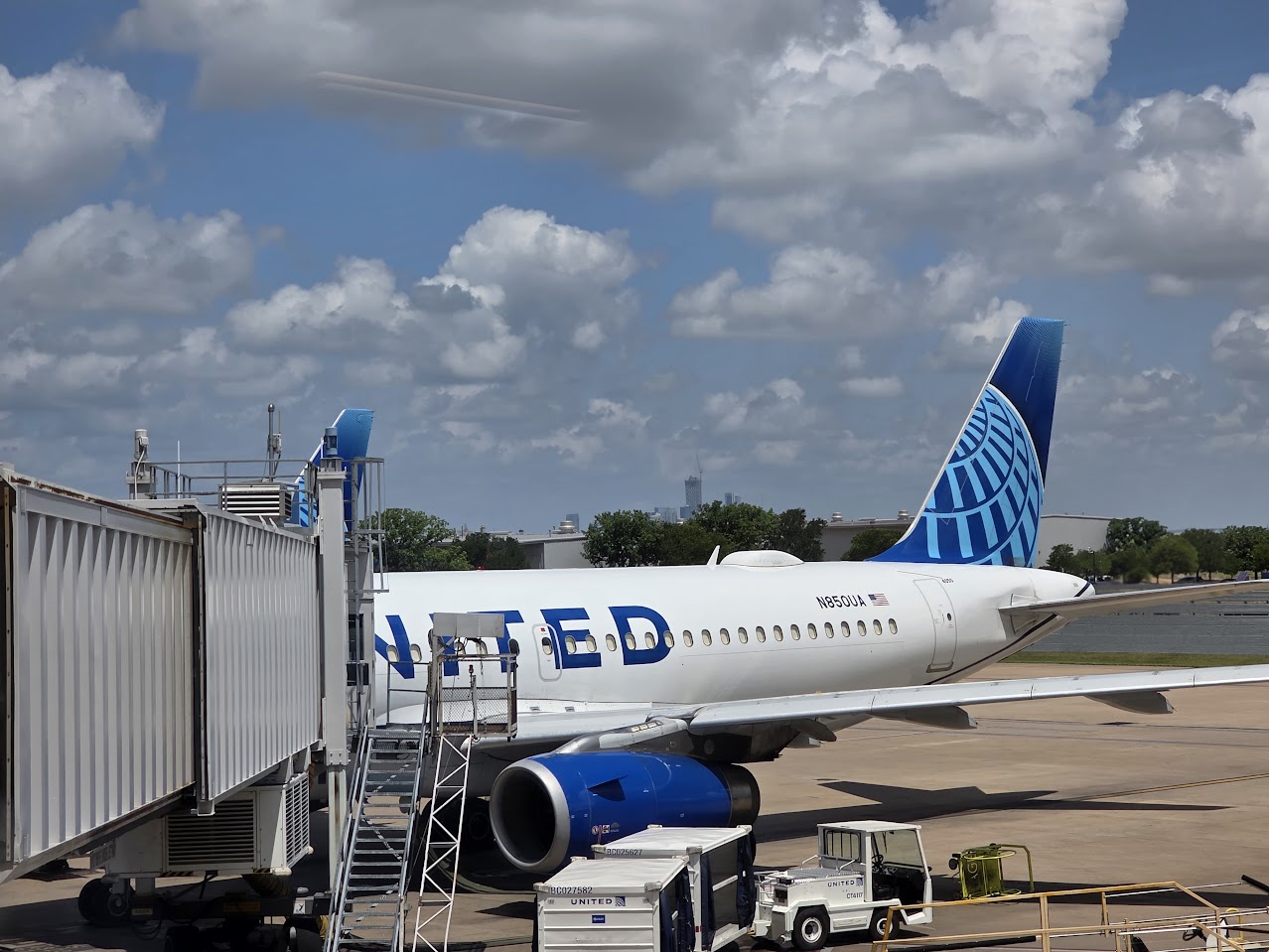
For the past year and a half, United has required cabin crew to be seated and buckled no later than the “double chime” (~10 000 feet) to mitigate flight attendant injuries. During this time, they generally don’t make lavatories available to customers.
- It’s common on most airlines to tell passengers to be seated, seat belts fastened, tray tables up and seats in their upright position – and carry-on items stowed.
- During this time, if you get up to use the lav, a flight attendant nearby will likely tell you “the seat belt sign is on” which many passengers incorrectly interpret to mean they aren’t allowed to use the restroom (they’ll get in some sort of trouble for disobeying crewmember instructions).
- In fact, the crewmember is usually doing all they need to – if you get hurt it’s not their fault!
- But on United, they actually prevent you from doing it.
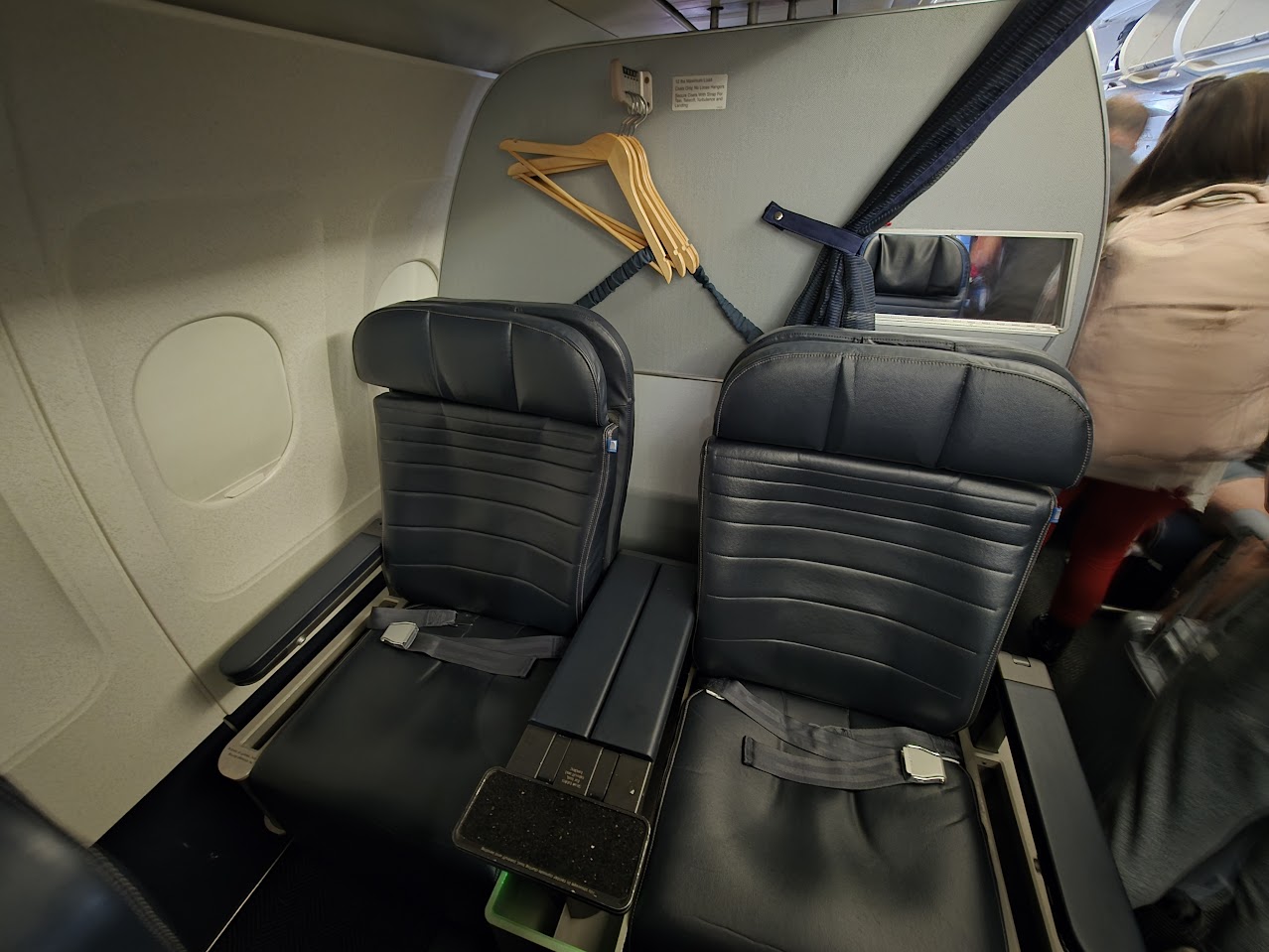
If a lavatory door were left unlocked, a passenger could enter after crew are seated. They might stand up (violating the fall 2023 policy).
Approaches into Denver in particular are often bumpy. That’s where I heard the announcement about locked lavs. This prevents passengers from using the facilities during the choppiest air. The airline guides cabin crew, “if the belt sign is on, do not make lavatories available.”
Note that locking the lavatories is not an FAA rule. 14 CFR 121.317(f) requires passengers to remain belted when the sign is lit. Keeping the doors locked reinforces this.
You’re going to see this most:
- in significant turbulence
- on Denver approaches
- on United’s Airbus A321neo aircraft where jump seats block the path to the lavatories

If you’re flying United, you need to treat the end of flight announcements as your last chance to use the bathroom.
But what do you do if you really have to go? You need to make a quick calculation.
- Trying to force the door or argue can get you in some trouble for disobeying crew instructions. At least in theory.
- A couple of United flight attendants I spoke to both told me that they’d never give a passenger a hard time for unlocking the lavatory themselves if they had a bathroom emergency. They made the announcement. They locked the door. They fulfilled their job obligations. As long as you’re polite, not a jerk, they aren’t going to pursue it.
- But one flight attendant’s perception of jerk is different from another’s! And every situation is different. Plus, someone could be having a bad day.
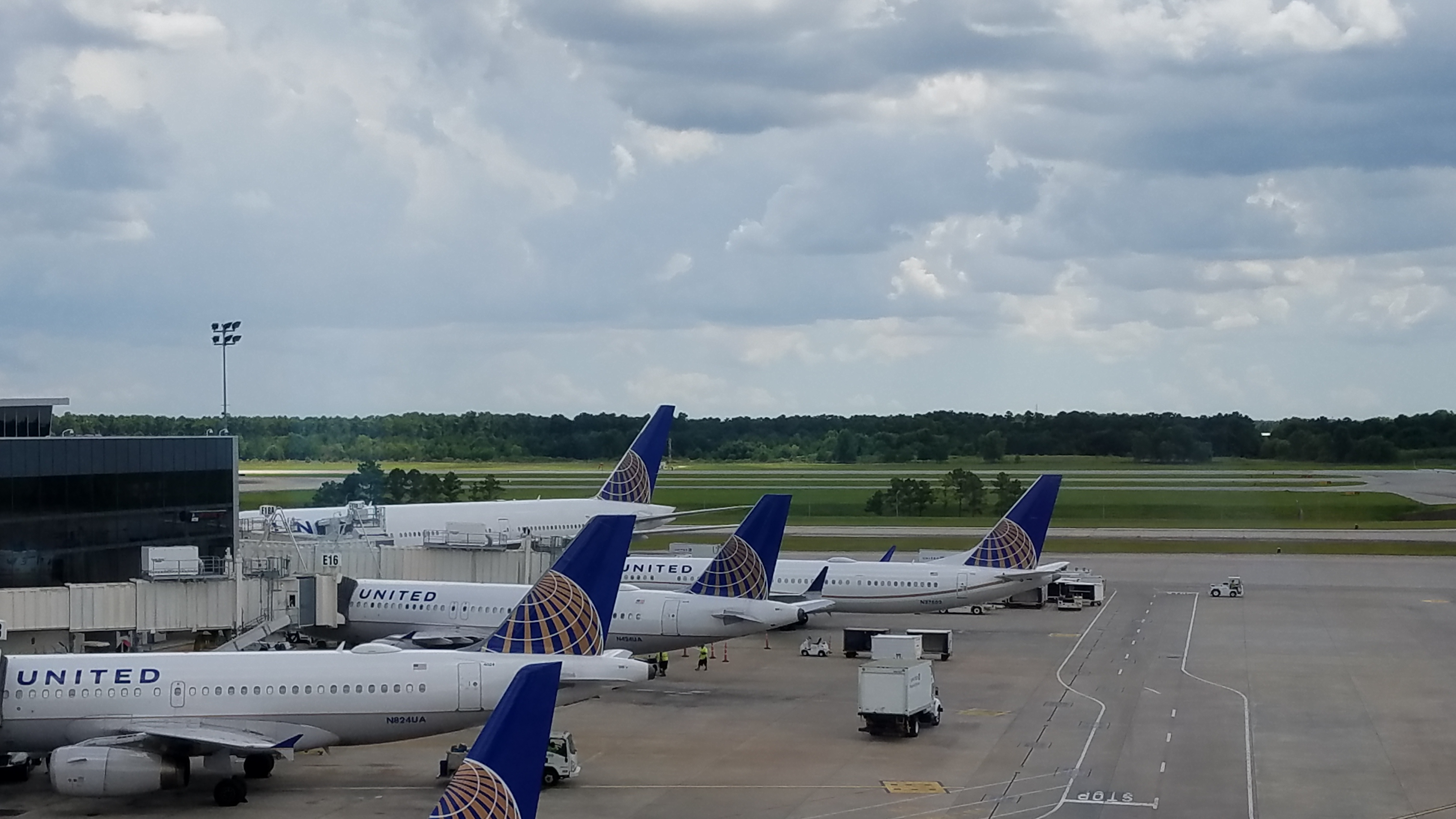
Weigh the risk of getting written up, or even speaking to authorities after the flight, against the likelihood you can make it onto the ground, and taxi to the gate, before reaching a bathroom (either the airplane’s lavatory prior to deplaning – though you’ll have to fight through a sea of people in the aisle most likely, or the time it takes into the terminal).
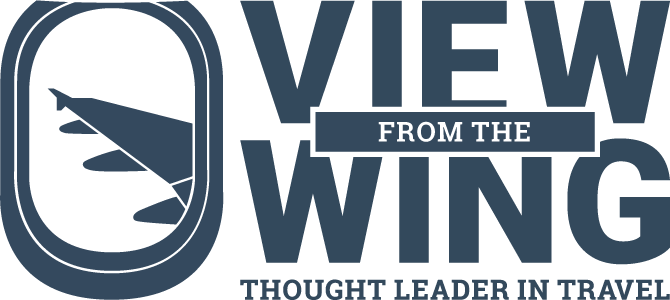

happened on a Spirit flight – I thought you covered it – and someone (a woman) just pulled down her pants in the galley and let it rip
@Tim Dunn — while I don’t remember that specific incident, I do seem to recall a post regarding a woman on a Southwest flight stripping naked and pooping in the seat.
Late lavatory visits also reminds me of a post where Gary highlighted people hiding in the first class lavatories to try and deplane first.
Deferring to call back expert, @1990!
@Tim Dunn — I would say, ‘dinner and a show,’ but Spirit doesn’t serve meals…
@L737 — Ah, yes, not too long ago, April 26, 2025, Gary posted: “‘Grounded For Deep Cleaning’: Chicago Cops Board Southwest Plane After Naked Woman Poops On Seat.” Classic!
I have seen this on AA and BA flights. While not common it does happen
Alaska Airlines has been locking the lavatories for as long as I can remember – many years. They even announce it: “The lavatories are now locked for the remainder of the flight”.
(For those ‘in the know,’ if it’s a true ‘emergency,’ and, like, no ones in there, but they locked ‘em, just flip open the latch to open manually… I mean, you’re gonna get ‘banned’ by the airline anyway, so, might as well ‘take care of business’ in the toilet than on the floor.)
I understand the safety argument, but locking people out of toilets seems extreme…especially if the duration is long. We can’t be trusted to decide when to get up during turbulence but we can be trusted to decide to not wear a helmet while hurling down the highway at 75mph. which one’s more likely to get me killed? And, if I choose to get up during turbulence and am injured I do not have a right to sue the airline for damages.
Unless there’s a last minute extended delay it’s about 10-15 minutes before the plane lands once flight attendants are told to be seated for landing. You mean people can’t think to go beforehand or hold it in for 15 minutes?
Mid flight might be a bit different. At some point if the seat belt sign is on for an extended amount well mother nature.
I see two options: Airline tickets including a clause that says something about standing or using lavatories when seatbelt sign is on at own risk and/or fining someone who does something like get up during that time to get something from the overhead, for example. Just follow the rules – unless your bladder or bowels are exploding. If that’s the case try to speak with a flight attendant – politely. If you have known issues, wear Depends to fly – I hear they’re very comfortable now.
The problem is if someone chooses to get up it isn’t just themselves they are endangering.. it is the person or persons nearby they will injure when they fall on them.
It’s long been an SOP on UA to lock the lavs for takeoff and landing.
It’s just frustrating when crews forget to unlock them. A few weeks ago, the seatbelt sign came off pretty early after takeoff, and I went to go use the lav, which was still locked. There weren’t any FAs nearby, so I unlocked it myself.
I guess an FA walked by and saw it was still locked, so she unlocked it…with me inside using it, before taking a peak inside. Awkward.
Was just on a flight from London where the “descent” lasted over an hour and they locked the bathroom doors. I got up and was told to sit back down, but then the Purser came over and told me that I could go to the bathroom thank goodness. We were doing figure eights around Dulles Airport. In Polaris, so was ready to get the water bottle out and refill it.
You can thank the slip and fall lawyers.
“Descents” on United often last over an hour — the “descent” is often declared by lazy flight attendants 20 or 30 minutes before the pilot, because it allows them to retire to their jumpseats and gossip or read early.
I always wear my seat belt when seated.
Whether I’ll use the restroom when the seat belt line is on depends on the FAs. If the light is on but the FAs are still up, I’ll use the lav if the need strikes.
If the FAs are in their jump seats, I feel like the turbulence is For Real, and I stay seated.
I would never try to use the lav on descent or during taxi.
@terry937 one wonders if you were in economy of the FA would have done the decent thing. My best is on “no”.
Alaska has done this for at least 10 years, the labs are locked somewhere between top of descent and ~18K feet. Same thing on climb out, the lavs are usually locked until around ~20K feet or longer if there’s turbulence. The more annoying part is having to put laptops away before the 10K ft chime.
The seat belt sign is left on too long past turbulence being over, seemingly to make people settle in and be less work.
@George Romney every year my answer to “how long is too long” gets shorter and shorter. Getting older is not for the young. LOL!
Flight Attendants are the Cops of the sky. They are now powerful people and they are damn well going to use that power , just like Land Cops. Say the wrong thing or with the wrong tone are they can interrupt your trip. I hope I never go through another air port with homeland security , which is just another hidden Tax to employee affirmative action and DEI people which will vote Left and are some of the dumbest a$$holes on earth….
@bill ganas — Instead of ‘DEI people’ why don’t you just use the n/c/f words to describe your animus. As the emperor says, let the hate flow through you!
Actually my observation is the United crew PR picture of four that is used everywhere.
Enough with the lady & her long hair in my food & face when they’re serving customers. And how does the really fat lady get through a window exit in her emergency training? Seriously.
@ Parker — Of course they have the right to sue the airline. It doesn’t mean they will get far in doing so, but they stll have the right to do so.
I fly AS quite often and I hear them always make an announcement “lavatories are now unavailable until we are at cruise altitude/reach the gate”
As for UA, maybe I missed a memo because I’ve never heard or read a policy that states “if the belt sign is on, do not make lavatories available.”
Most airlines that I travel do lock the lavatories for take off and landing.
I would have liked to see a picture of that latch instead of two empty seats and a flight crew.
This topic has been rehashed for so long. 14 CFR 121.571 says comply with crewmember instructions regarding smoking and seat belts. What can happen is instead an “interfering with a flight crew.” Like someone said, if your option is to get 86’d for pooping in your seat or standing up and unlocking the lav after the seat-belt light is on (or annoucement made) well you take that risk, but unlocking the lav is a lot easier to explain to the LEOs (*IF* the pilots call them.)
But hey the new autocratic rules of the Part 121 ops are the FAs. Flight attendant unions have ensured that seniority is most important, andappearance, attitude, and customer service are not. You won’t have this problem on a Part 135 carrier like the aforementioned JSX. This is not to fault the FARS that distinguish 121 from 135… this is a carrier/FA choice.
When the flight deck crew knows there will be a delay from that seat-belt sign (most airlines 10,000ft, one person mentioned 18,000ft) they could give the FAs the head’s up. Same for congestion, emergencies, too much fuel on board (tailwinds enroute), etc. In any of these cases and more the descent will take LONGER, and that doesn’t change the LONG taxi, ramp, offboarding onto a LONG walking jet bridge (let alone if you need a wheelchair) and then finding the nearest restroom can take anywhere from 20-45 minutes.
Some people have medical conditions (or ate airline food, or stopped at Sbaro’s before takeoff) all of which means no, they can’t “just hold it.” That works when you’re a kid with no budget so you don’t overstuff yourself with crap… but those of us who fly regularly don’t even look at prices; we just buy what we want and gobble gobble gobble. Then, onboard, drink, drink
There are many reasons when you ask for water the FA brings a cup of water, and not the canned or bottled water. Cost is the least. Storage space, weight (8.3lbs/gal), and cost ARE factors, but they’d rather not “waste” FA time on non-revenue trips down the aisle or encountering pax running to the lav.
Can the FAA solve this: Well it takes a year just to get to an NPRM, and half a year after that. Then they have to provide a compliance period. Finally they have to decide to whom it applies. Part 121 is easy. Part 135 includes that Cessna 182 I chartered from Gilette WYO to Denver CO. Surely those regs won’t apply there. BUT Part 135 operators have to have a plan (formerly three ring binder now web pages or PDFs are fine for most things.)
So if they weren’t tied up by the current administration maybe they could pass something by 2030. Not very likely. The FAA is understaffed and that’s the people who do the yeomen’s work — the ATC folks. The rulemaking boards and committees aren’t likely to care about locking lavs for descent.
The airlines could decide what they want to do en masse, but they’ve already shown a proclivity to continue this (someone said Alask and BA and AA have been doing this for years) so they’re unlikelly to reverse course.
Pax hav no say. We must obey. (Rhyme intentional.)
So the only thing I can think of… if the seat-belt sign is lit, hit the “do not call the FA button” button and apologetically explain your diabetes requires often bathroom visits, and while you avoided overeating or drinking you NEED TO GO NOW and can they PLEASE HELP you with dealing with YOUR DISABILITY.
I’m a diabetic and I’ve found when it’s expressed as “I have a disability” (yes it is officially one in the United States) and “can you help me” that works a lot better than “let me tell you how diabetes sucks.” Nobody wants to hear that I gave up pizza, donuts, hamburgers with brioche buns, cornbread, tortillas, pitas, any sweet fruit, apple juice, orange jui… see you already tuned it out.
And as someone said… be nice… always be nice. That was Dalton. He said that. FA’s do have a pretty rough job and for the union folks it takes a while to earn seniority. If you must fly commercial remember that. Joe Biden does.
https://viewfromthewing.com/joe-biden-just-bumped-a-passenger-out-of-american-airlines-first-class-should-that-ever-happen/
We should boycott and refuse to buy any food or be served any drinks during the flight. You should not be eating or drinking if you can’t go to the bathroom.
So I’m sure the captain is “doing everything they can” to avoid the turbulence so we won’t be inconvenienced. Yeah right. Let the turbulence continue so they can lock the doors. .
I’ve seen this on Alaska Airlines flights for as long as I can remember
I wear adult diapers when I fly, specifically to avoid the lavatory. On Amazon I buy the Abena M4 briefs for about $30 a bag. They can hold several uses, so you can still enjoy several drinks and not worry about leaks! They are pretty thin and discrete too; I recommend to all.
Interesting most of the nasty comments are from men. Ehud Gavron there are many inaccuracies in your post. You clearly have too much time on your hands. FYI some airlines no longer board individual bottles. Hope you aren’t as pompous in person as you are in your posts but I bet you are. If you really can’t hold your bladder and it’s an emergency maybe tell them it’s am emergency. Or better yet waste some taxpayer dollars and make an DOT compliant.
The secret: adult diapers. The best ones are the online pharmacy brands, not the drugstore Depends ones. I always fly in a diaper.